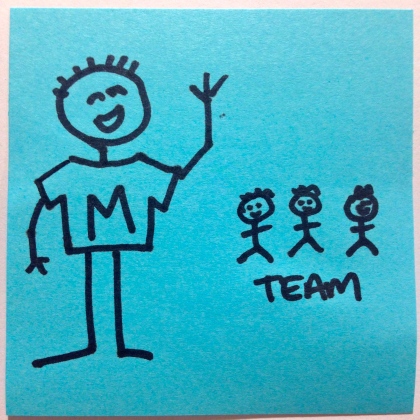These days, more and more people are engaged in conversations about distributed agile. Is it really necessary to have the entire team be co-located in an office all of the time?
I have a strong opinion that agile can work just as well with distributed teams, as long as the basic principles are followed. Starting first and foremost with trust. I am a product owner who works remote. My situation is perhaps not very common, in that I am one of several product owners in our organization working on the same end product. The other product owners all work in the same office along with the majority of our development and QA teams and of course our scrum masters. I on the other hand work in a different location and even a different time zone than the rest of the team and have done for several years.
Initially, our company was working in waterfall, which means that this arrangement, albeit unusual in our organization, didn’t raise that many eyebrows. After all, working remote is becoming more and more popular these days, although admittedly it is still relatively new to the hospitality industry. Developing in waterfall, my working remote meant that I was able to spend many focused hours writing detailed requirements, without interruptions or distractions that naturally occur working in an office. I was able to produce a lot of quality work, delivered on time and with no adverse effects on any other member of the team.
Then came agile… all of a sudden working remote became somewhat of an enemy. Agile says teams should be co-located. Period. Or so people thought. In my situation, re-locating to be with my team at all times simply wasn’t an option. Luckily for me, my managers and team members were open to exploring slightly more unconventional setup of remote scrum. So for the past few releases I have been the remote PO of a scrum team, sometimes with all other team members located together, sometimes with some of them also remote. And I can honestly say: it works.
I wouldn’t go as far as to say it’s just as easy as doing scrum when you are co-located, although I can’t say that with complete certainty, as I never have done scrum without being remote. I can say however that being remote makes me far more organized and forward thinking than I believe I would have to be otherwise. Because my team is working for a portion of the day without being able to reach me, I need to be extra clear in our daily meetings, always make sure I prioritize making myself available to them when I can and ensure that the teams’ priorities are crystal clear, so we don’t run into any bottlenecks.
For me, the key to being a great scrum team is trust. To be successful as a team, I have to be able to trust the developers, the developers will need to trust the QA, everybody needs to trust the scrum master and trust the product owner. Without trust, there simply is no team, without trust, we are just a bunch of people giving and following orders.
While it might seem that working remote scrum makes trusting each other harder, in my experience, it is actually the opposite. Allowing the arrangement where some of the team are remote, is an immediate sign to them and the outside world, that they are members of the organization that can be trusted to work unsupervised. In remote scrum, there is no space for micromanaging or looking over people’s shoulder, we just trust that we each get on with our work. And when we do get together each day, we make sure our time together is focused and used effectively, because we know it is limited.
I can’t say whether working remote has made me a better product owner, but I can say that our team has been able to deliver just as much value as any other co-located scrum teams. So for me, distributed scrum is more than a remote possibility.

